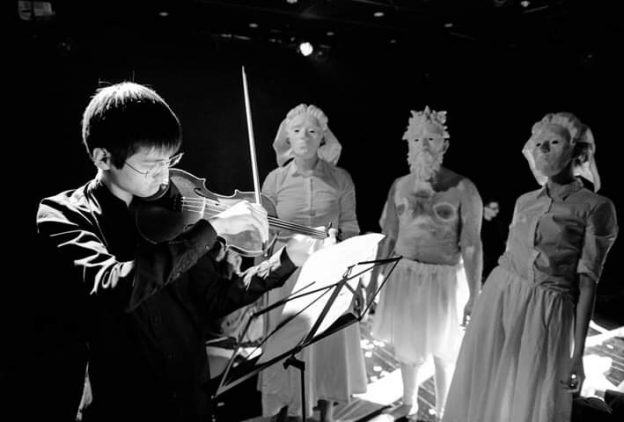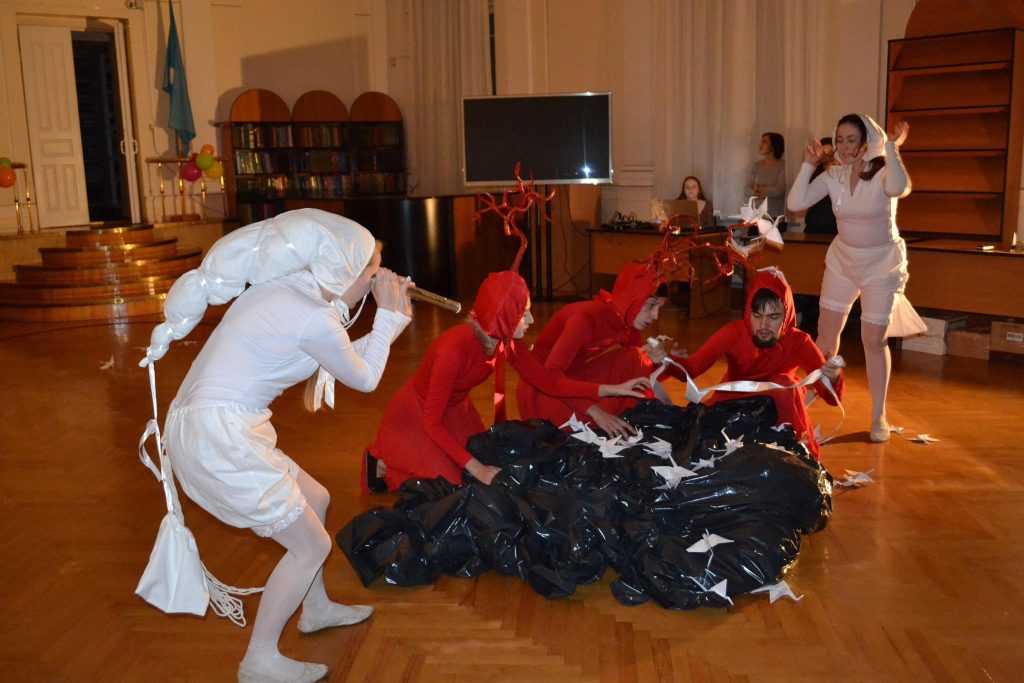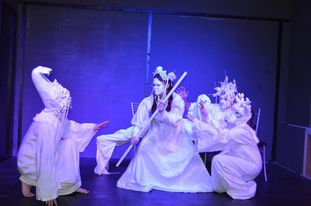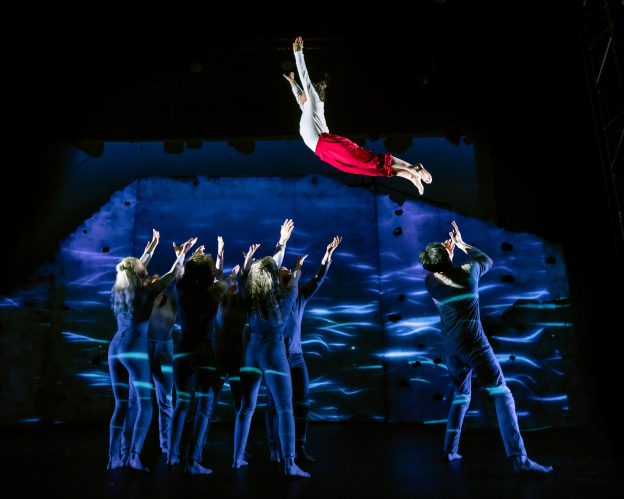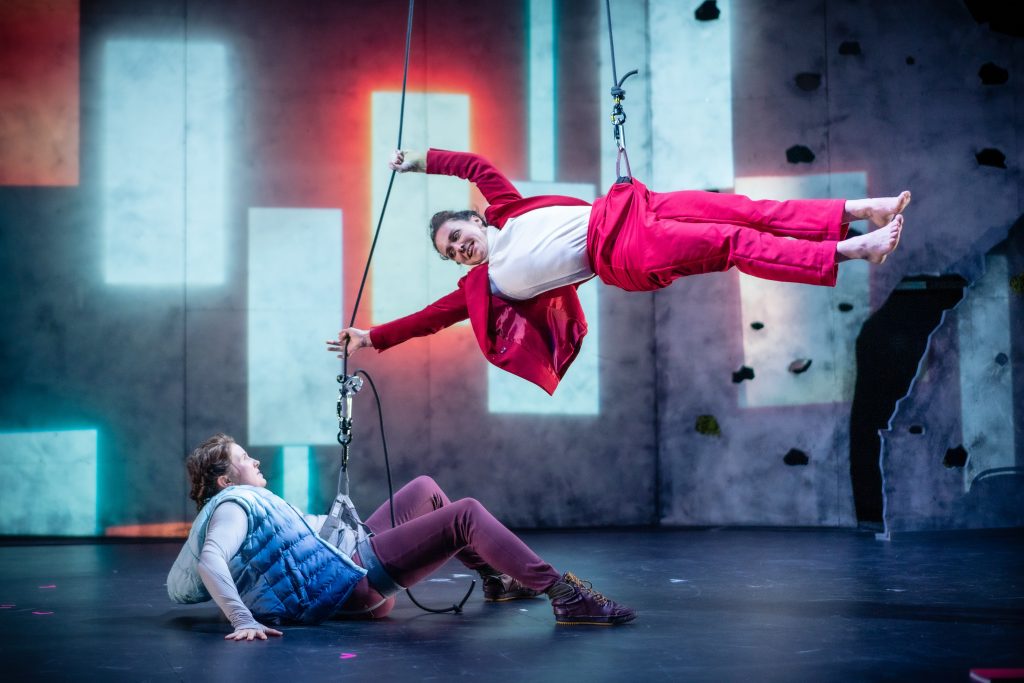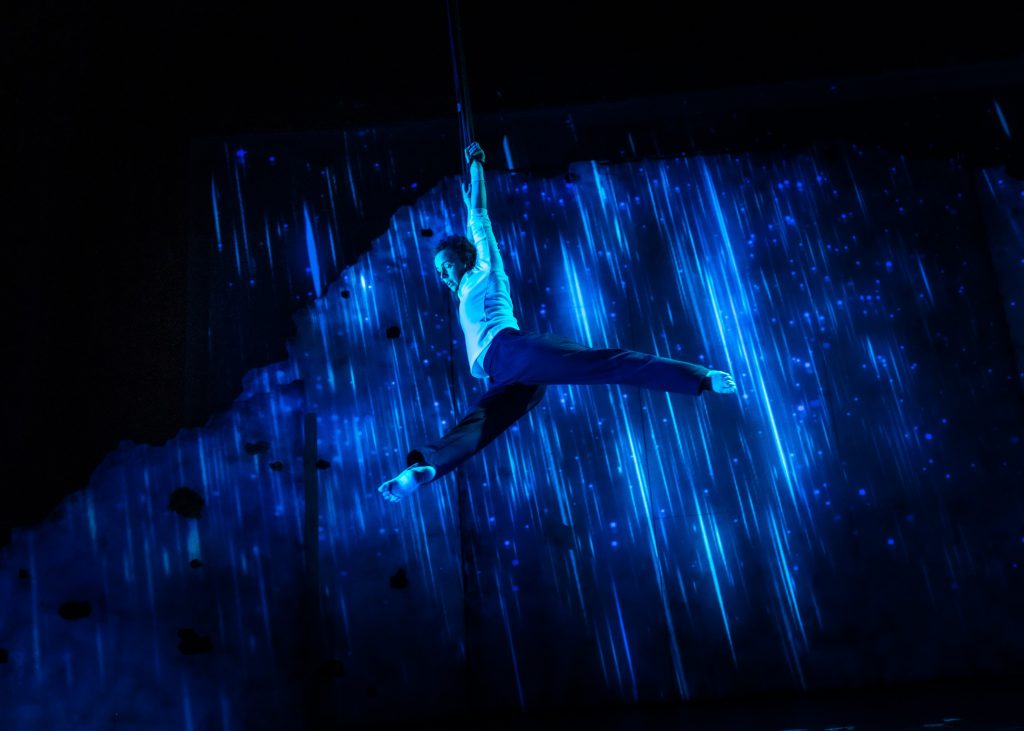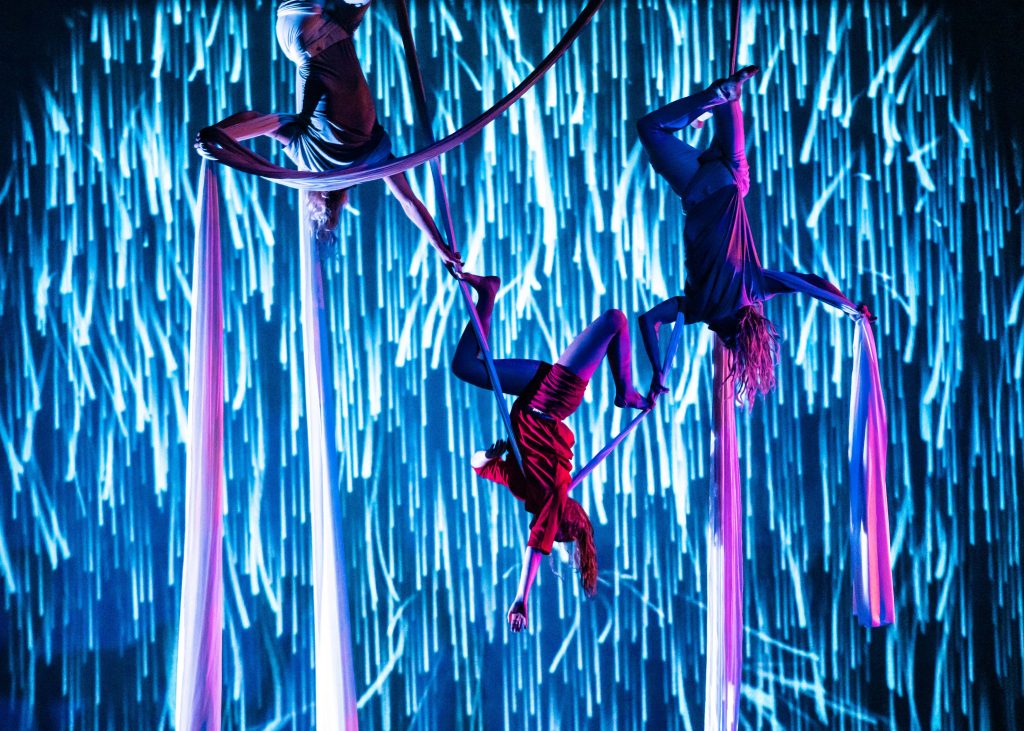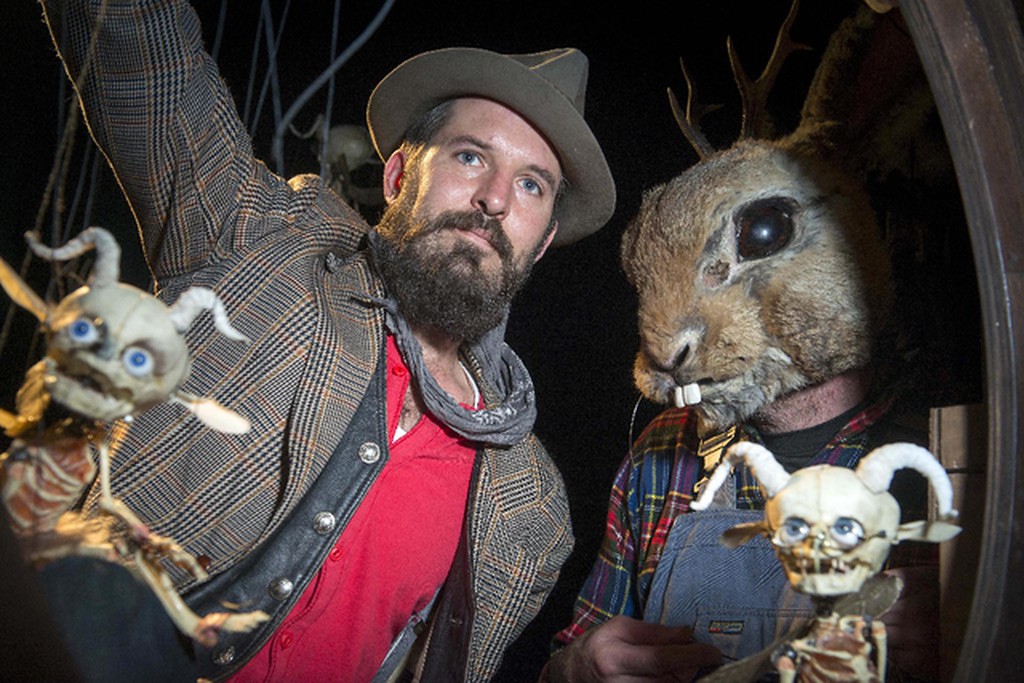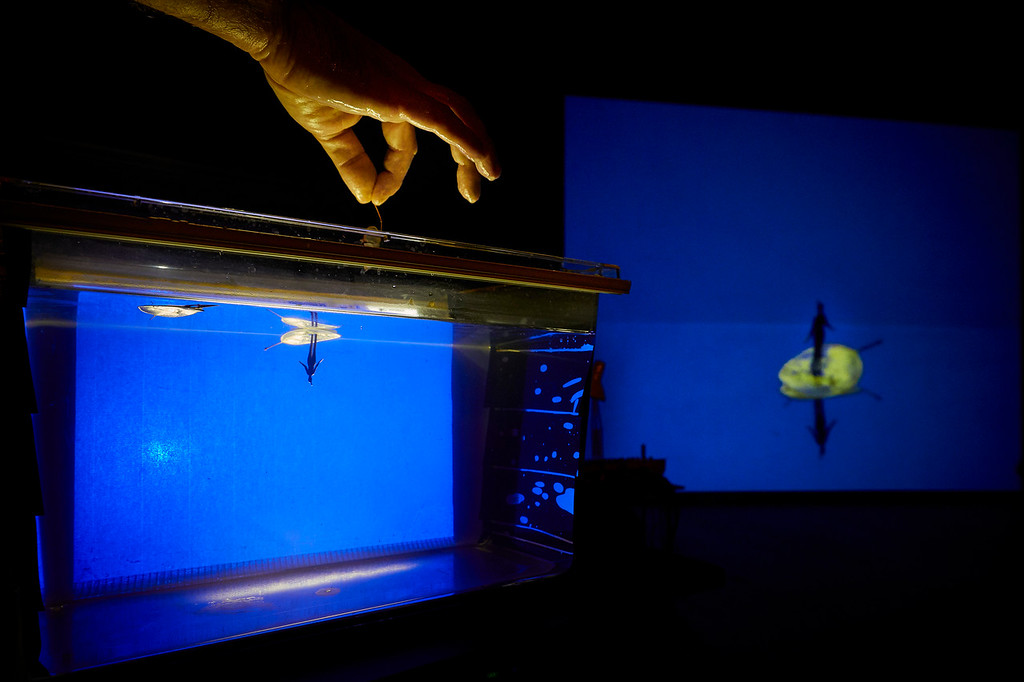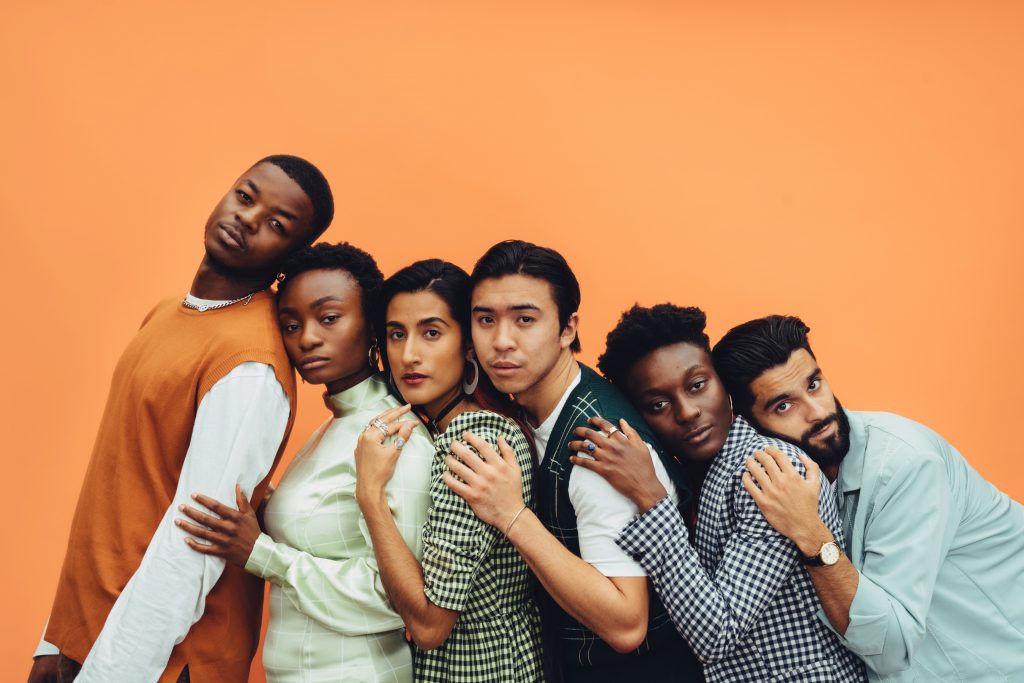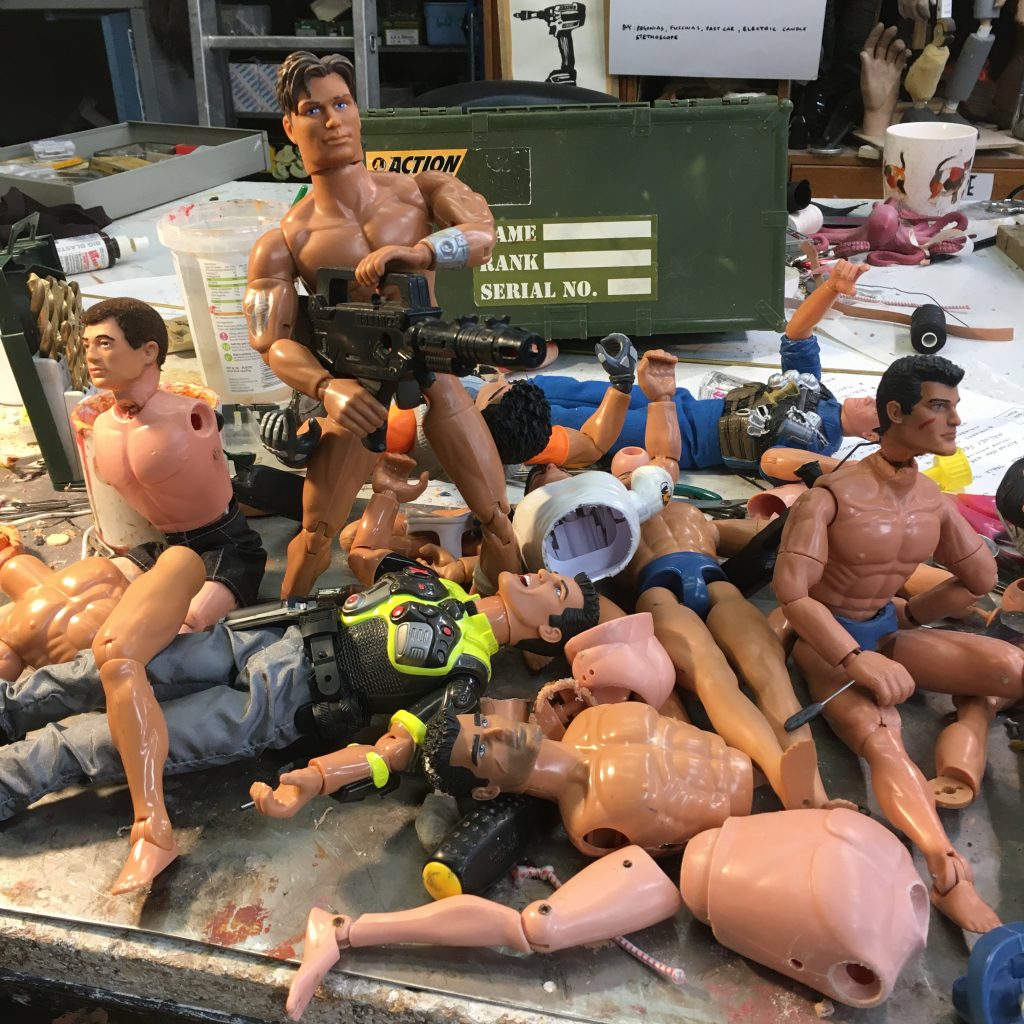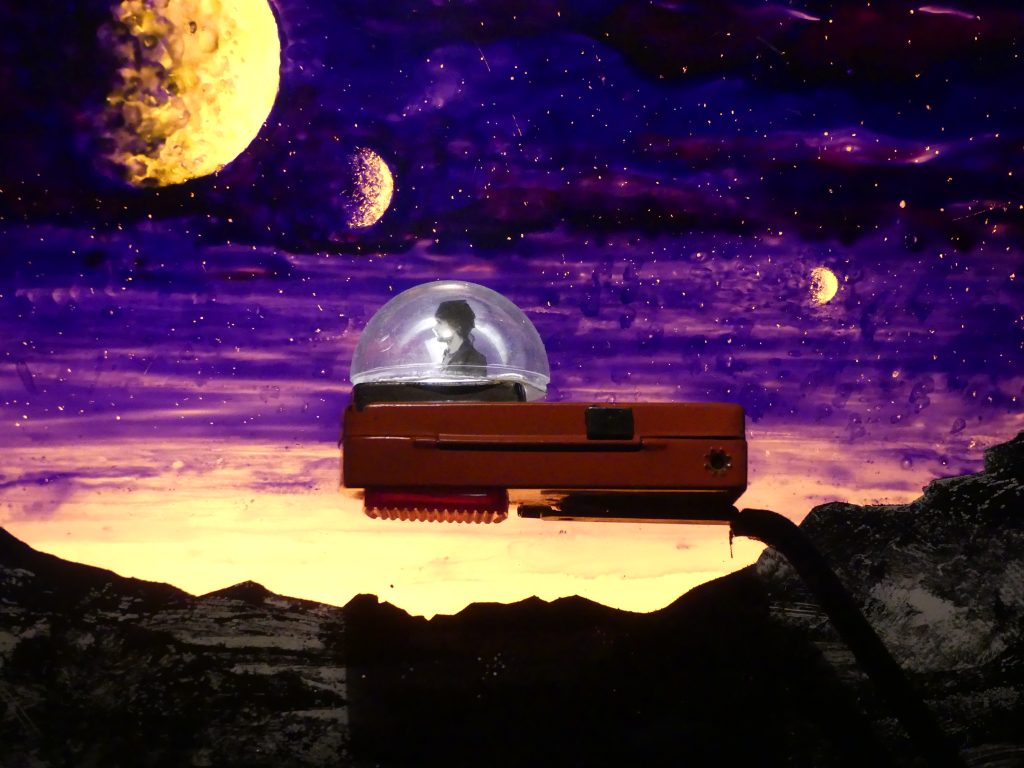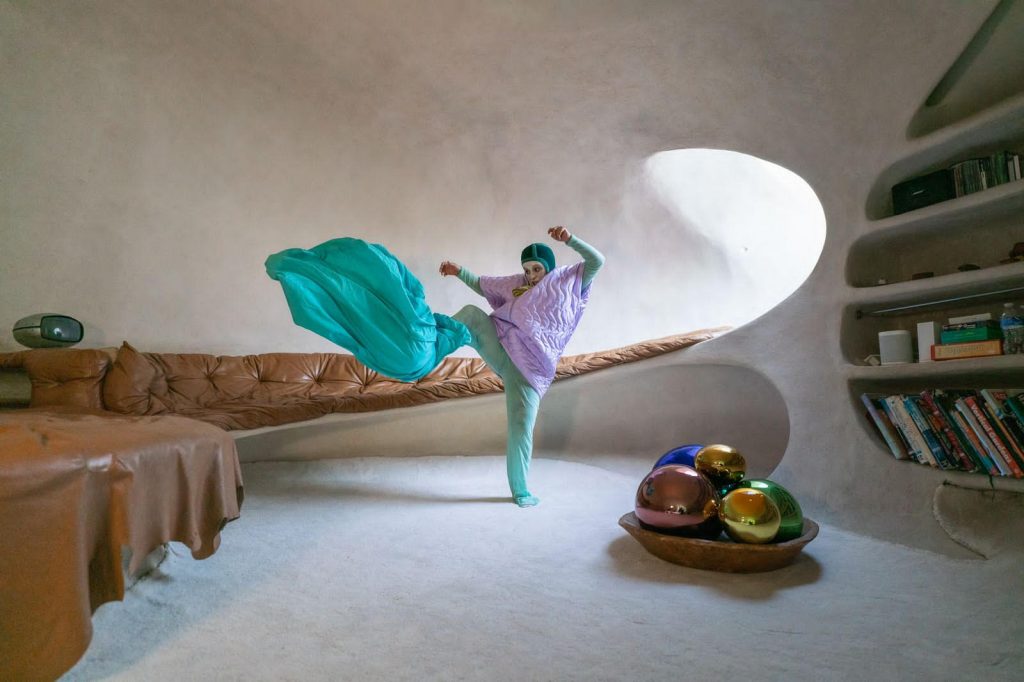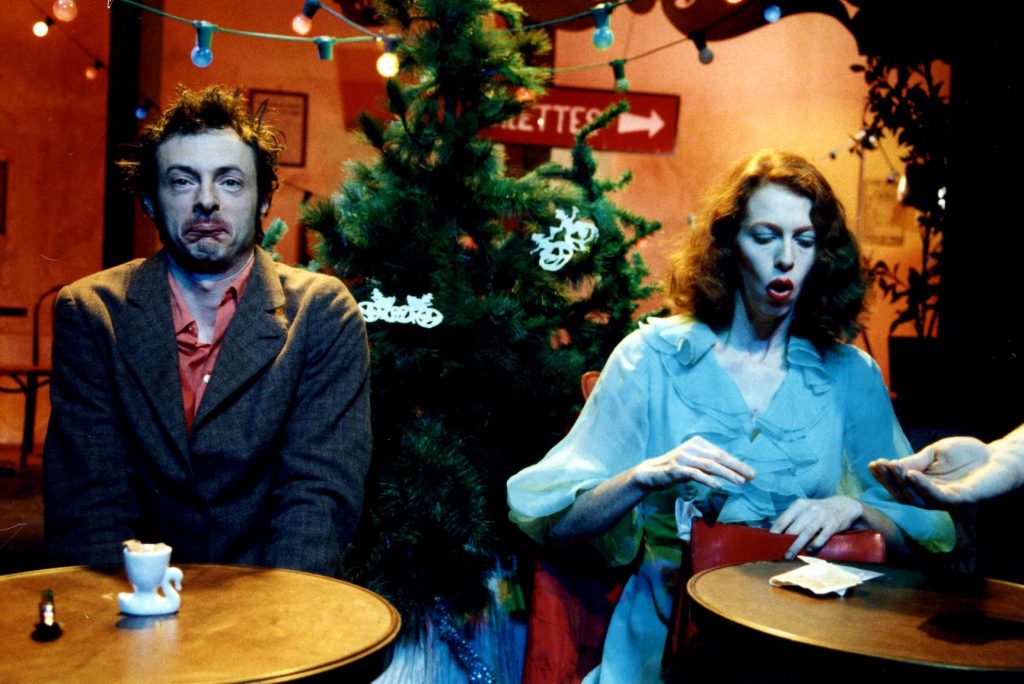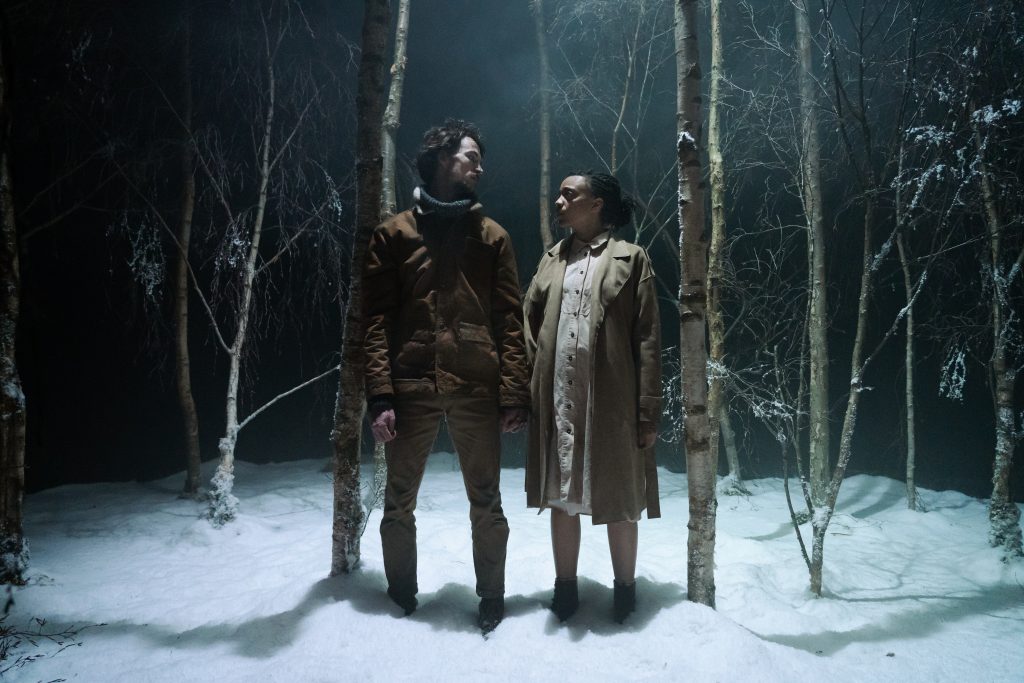Dorothy Max Prior goes to the Reykjavík Fringe 2022 and encounters a thriving community of artists from Iceland, from other Nordic countries, and indeed from across the globe – a 90-show extravaganza held over ten days, all lovingly pulled together by festival director Nanna Gunnars and her dedicated team
‘Mostly, I’m excited to be meeting people,’ says Nanna Gunnars, director of the Reykjavík Fringe Festival. ‘A lot of the prep is spent on email. I’m behind a screen for hours thinking, why am I doing this? But now it’s coming together, it’s the day before the opening, and the artists are arriving… And although I’ll be running around like mad for the next 10 days, I’m going to be meeting so many people from around the world, and seeing so many great shows.’
We are sitting having a grilled fish lunch at Skál! in the bustling Hlemmur Matholl, a former bus station converted into Reykjavík’s latest foodie temple – the ‘we’ being me, Nanna, and ‘first mate’ Owen Hindley. It is Thursday 23 June, and it is indeed the day before the opening. We are watching the clock as Nanna needs to go across the road to the Galleri Fold to oversee the hang of the comic book art exhibition which will launch on Saturday; and Owen needs to power on with sorting out the technical needs for shows going up in the first day or two. This lunch might be their last proper sit-down meal for a while!
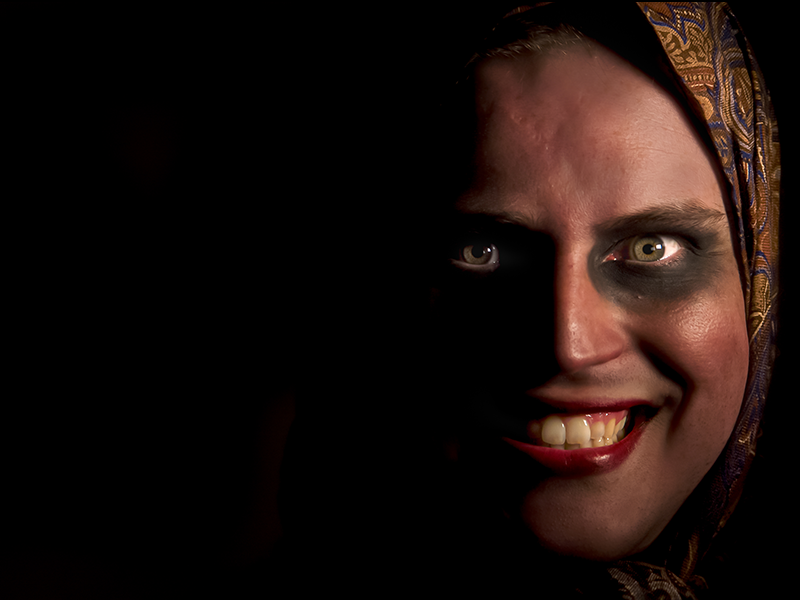
Native Icelander Nanna and her English fiancé Owen are part of a four-person core team running the festival. The other two are festival co-director Olivia Finnegan, a cheery and enthusiastic US American, who is, amongst other things, responsible for overseeing the team of up to 60 volunteers staffing the 2022 festival; and head of technical production Juliette Louste, a striking French woman replete with buzz cut and baby in a Snugli carrier.
‘We all take on what needs to be done,’ says Nanna, talking of the core team’s shifting roles’. Except Juliette, who stays within her tech remit – she manages the team of six technicians, and programmes and oversees all the get-ins and technical rehearsals. Owen is her right-hand man, but he also does the graphics and other things…
Then, there are the photographers and videographers – and although some are dedicated to just this work, others are multi-tasking. Take ‘wee Scottish boy’ Andrew Sim, as he is called by his alter-ego Linda, a fabulously fractious old bird who will co-host the opening night party, and whose Freakshow is a returning hit. ‘He’s one of my favourite acts,’ says Nanna of Andrew, going on to comment on his multiple roles within the festival as typical of the sense of community that they have engendered.
‘We are like a family,’ Owen adds. The 2022 festival has plenty of artists who are returning to the festival, from across Europe and North America, and in some cases further afield – although there are many new faces, too.

Which brings me to ask about highlights of the 2022 programme. Nanna stresses that there is an application and selection process, rather than it all being curated around her taste as festival director, and that the aim is to provide an eclectic mix of work that includes theatre, dance, visual arts, and comedy from across the world – so I can sense that she is reluctant to prioritise some shows over others, but I do nudge her to name a few she’d particularly like to flag up!
At the more mainstream end of the programme there is Ari Eldjárn, a stand-up comedian who is a Netflix star and a household name in Iceland – a coup for the Reykjavík Fringe that gives them a reach into the wider community, and guaranteed full houses on the nights he performs.
Somewhere in the middle ground – that is, popular and accessible, but breaking new ground – are shows such as Triptych Men, a three-man dance-theatre-comedy show from Israel that is a companion piece to Triptych Women, which had a successful run at the Edinburgh Fringe a few years ago. Both pieces are choreographed/directed by Sabotal Theatre’s Gal Sabo. ‘It’s essentially the same concept for both,’ says Nanna. ‘A trilogy of performers – either three men or three women – in competition with each other; telling stories, dancing, vying for the audience’s attention…’ It’s one that I have marked down as a must-see.
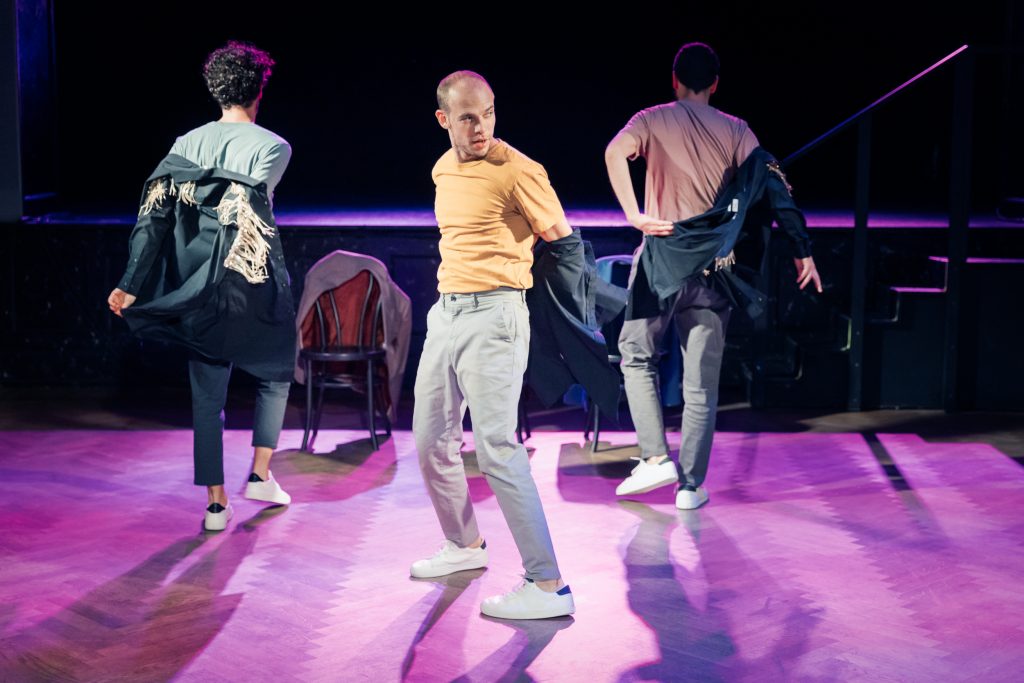
Then, there is Spindrift – an ensemble that developed out of Rose Bruford College’s BA in European Theatre Arts (ETA), formed by a mix of Icelandic and Finnish performers. They are presenting two pieces in the Fringe. Them is an ensemble piece performed by four women that explores gender divides, male self-image, and the ongoing ‘battle of the sexes’ (aka patriarchy and how women deal with it). Their other show, We’ll Dance on the Ash of the Apocalypse, is a climate-crisis drama performed in Icelandic by a real-life couple playing a fictional couple who are deciding whether continuing with an unplanned pregnancy is justified as the world collapses all around them.
Nanna (also an ETA alumnus) is the company’s producer and, speaking of their pre-Fringe premiere of Them the night before at Tjarnarbíó theatre, says ‘I felt a swell of pride. They have been working on this show for six years – six years! – and always wanted to perform it in this venue. To see it with the proper staging and lighting and set design, the full show as it was always envisioned all coming together, and performing to a full house – it was magic!’
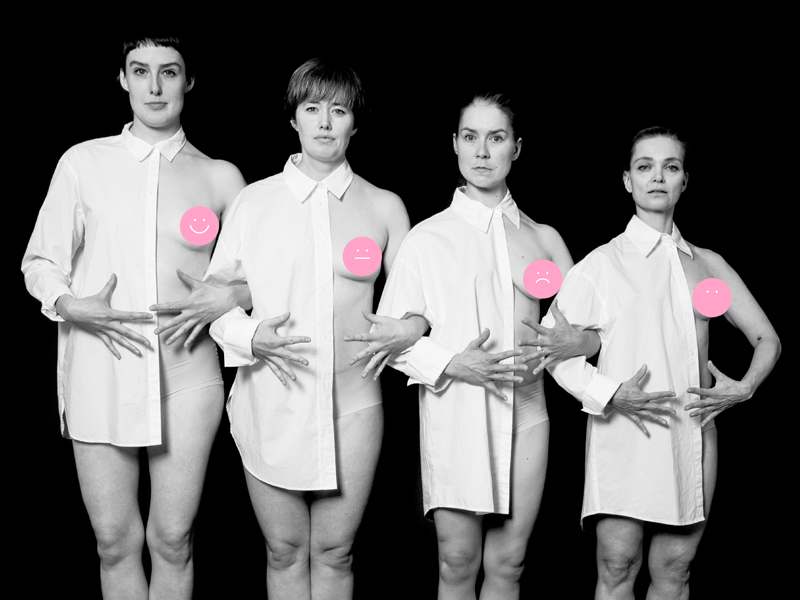
Nanna also flags up the inclusion of Líf, a show made in the north of Iceland by theatre group Umskiptingar, saying that it is good to show the world that there is more to the country than Reykjavík:
‘The show is about invented character Sissa Líf, who is an actor-musician and a (failed) former rock star. Basically, the character is a trainwreck and highly delusional about her own talents and capabilities.’
Lif, performed by Margrét Sverrisdóttir, goes on to win her the Best Character Actor Award – one of the very many Awards given out at Reykjavik Fringe!

At the more cutting edge end of this year’s programme are shows such as After, from Canada: ‘There are five performers and it is for an audience of just five people at a time,’ says Nanna, ‘and I have no idea how it works… I’m keen to find out.’
Then, there is The Road, a multi-disciplinary project that brings together artists from South Africa, France and Sweden through 3D animations, virtual reality (VR) and live theatre. Nanna and Owen have seen the show previously, and are thrilled to be presenting it.
Which leads neatly to a reflection on the couple’s own work as artists and co-directors of Huldufugl, and how that fits into the picture. VR work is very much part of their own interests as artists. They aren’t presenting anything in this year’s Reykjavík Fringe, but it was their artistic work that took them through the door in the first place. Nanna takes up the story:
‘There was a small team putting together a Fringe in 2017. Owen and I applied with our company, Huldufugl, to do a VR piece. We got in and thought, this is great. We don’t have to find a venue or produce it, we present as part of the Fringe. Then, for various reasons to do with co-organisers pulling out and a lack of funding, the festival didn’t happen. And I was like, oh what a shame – there was such great potential here. But they said “postponed” not “cancelled”. So I got in touch with the organisers and said, can I be part of the team?’
To cut a long story short, Nanna met the by-now sole Reykjavík Fringe trailblazer and she says: ‘He gave me his baby: the concept, a Facebook page, a logo, a website – and that was it.’ This was spring 2018, and with just a few months to go, she found herself programming and running the first ever Reykjavík Fringe Festival. In that first incarnation in 2018, 50 shows were presented.
For the second one in 2019, there was a luxurious whole year to plan: ‘We programmed 100 shows – and it was too much. We didn’t have the human capacity to service the artists properly. But we got a lot of attention!’
Then, in 2020, along came the pandemic. I presume you didn’t run the festival that year, I say. But oh yes – they did. ‘We programmed 50 acts, live and online,’ says Nanna. ‘We ran our own TV station,’ adds Owen. By June, many restrictions had lifted, and as long as gatherings were of no more than 200 people, they could go ahead. So they did.

If anything, 2021 was more troublesome as the goalposts kept shifting, right up until a week or two before the festival opened. ‘We didn’t know what to do – but we made the call to go ahead and had record numbers of people attending, although with very few volunteers as no one would commit ahead of time.’ So almost a normal festival – and they even had people come from abroad. It was the preparation that was hell, as Nanna recalls: ‘Oh, all the Europeans can come but the Americans can’t… Oh no, wait, now it’s the Americans who can come but some Europeans can’t… We ended up saying to artists: we can only update you as we go along, no guarantees – get a cancellation policy on your flights and we’ll tell you two weeks before if it’s happening.’
There were some shows planned for 2020 and 2021 that couldn’t make it, but they are now on the programme for 2022 – a programme bursting to the seams with good things from across the world. Nanna tells me that the festival has grown greatly over the past five years, and is now an integral part of the Nordic Fringe Network. Many of the shows seen here in Reykjavik will also be presented at other Nordic Fringes, such as those in Bergen, Copenhagen and Gothenburg; and the network has a Young Producers scheme, enabling its directors and producers to travel around and assist at other festivals in the group.
I ask Nanna and Owen how they find juggling their roles as artists and producers. They remind me that they are not showing work themselves in this year’s Fringe, as doing both simultaneously is truly difficult – but do concede that running the Fringe takes a lot of planning, and that does impact on their own work. Their company Huldufugl has two shows about to tour internationally – The Hidden People, which was developed in the UK with circus-theatre company Hikapee; and Parallel People, a virtual reality piece for five audience members at a time which grew out of their one-to-one VR work, A Box in the Desert. How they’ll manage to keep all balls in the air remains to be seen!
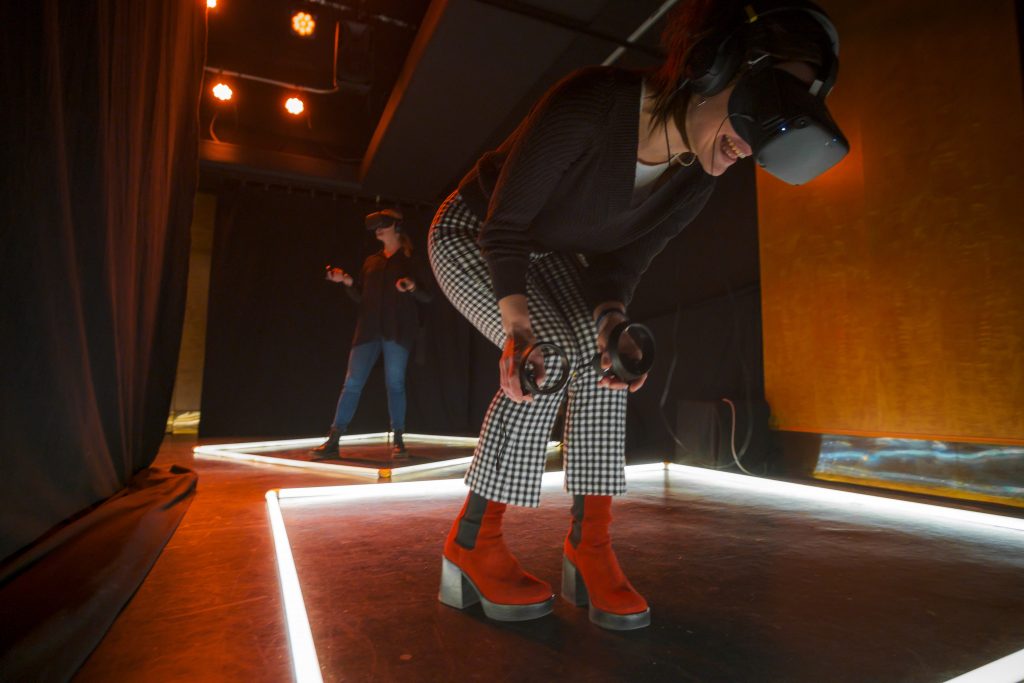
The next day, Friday 24 June – the official Reykjavík Fringe opening day! It’s another lunchtime meet-up, and we are now at Iðnó cultural centre, a beautiful old theatre building close to the city hall, next to The Pond – Reykjavík’s city-centre haven for ducks and swans. Nanna and Olivia are eating their soup on-the-go, whilst setting up the welcome area for arriving artists. The door out to the wooden deck overlooking the water is open, and the weather is good (you get to really appreciate the days of sunshine in Iceland – despite having previously visited the country in summertime I had come ill-equipped and had to go out shopping for gloves and scarf).
Nanna sets up an Artists Speed Dating session, and we all get to have a five-or-ten minute chat with a number of different people.
I speak to Ester Auður, aka Silver Foxy, who describes herself as ‘the oldest burlesque performer in Iceland’. She tells me all about the burgeoning burlesque scene in Reykjavík, and flags up the group she performs with, The Tutti Frutties. Performer Vice Versa, also in the Tutti Frutties, who I speak to next, confirms that burlesque is indeed a hot ticket at the moment, and tells me that she is running a queer burlesque workshop as part of the Fringe.

Musician and theatre-maker Cynthia Shaw tells me about her solo show Velvet Determination, which weaves live piano playing and autobiographical anecdotes into an exploration of her childhood, coming of age and professional life as a musician. She tells me that playing the piano is the easy part – talking whilst playing is what makes the show a tour-de-force! I get to see it a few days later, and enjoy it greatly – a very well structured and beautifully performed work, with highly accomplished piano playing. Comedian and musician Nick Jameson, a US American now resident in Reykjavík, seems like a nice chap – we end up talking about Cynthia’s amazing folding piano (not needed on this trip as the glorious old theatre space at Iðnó has a fine onstage piano), and about his own work as a musician and comedian – and how both come together in his Fringe show A Crowd of One.

Another conversation is with an enthusiastic young man called Lee Apsey, who is bringing Your Flaws: The Musical to the Fringe. It’s completely improvised from audience members’ confessions, so it is different every night. Later that evening, at the festival opening party, he teams up with female Icelanders Eldklarar og Eftirsottar (featured image, top of page) in a very funny and entertaining improv in which he speaks only English and the women speak only Icelandic – a fantastic demonstration of the power of physicality, gesture and tone of language, with the added bonus that some audience members spoke only English, and some both languages, granting different perspectives and responses in the room. And as Lee doesn’t speak Icelandic, his attempts to interpret and respond are hilarious. That opening night party also features turns from the aforementioned Vice Versa, resplendently costumed and working the crowd with great aplomb; and a wonderful Spanish dancer and choreographer called Julia Nicolau, with a beatboxing cum dancing excerpt from her solo show Y Todavia Somos.
Before the party, we see opening show Hold: The Musical, which introduces the festival theme of love, being about a relationship between a man and a very sexy female robot; and which also establishes the strand of musicals and music theatre that, along with burlesque, is a motif of this year’s Reykjavík Fringe.
That said, there is a lot more work at the festival that fits neither of these categories. And although some acts get a slot at the opening party, Sunday night’s Preview event gives us a taster of a lot more.
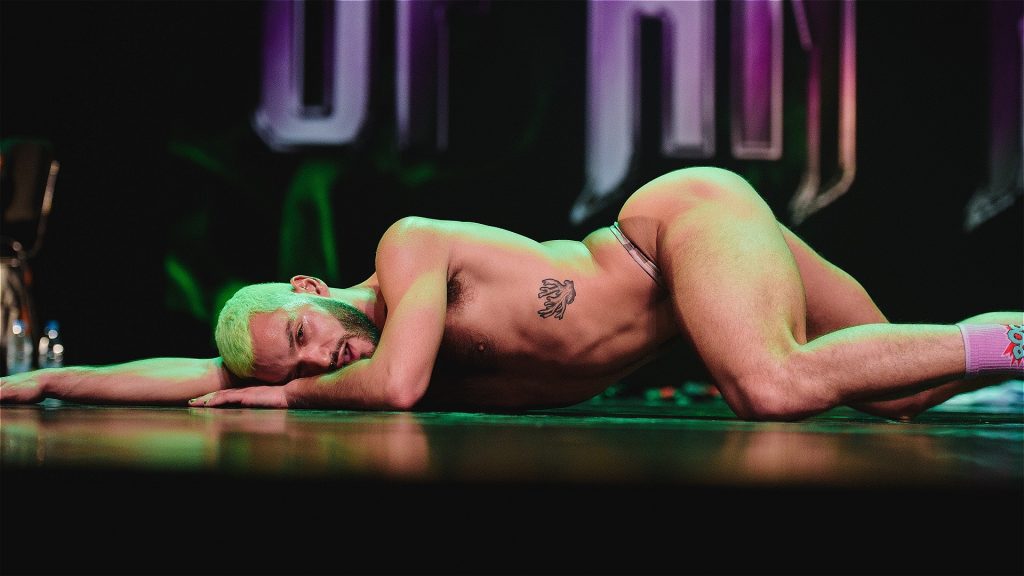
Of the shows that I won’t be around to see in my flying visit, the ones that I would really have liked to (based on the two-minute excerpts or trailers presented at the preview night) include The Playground, a charming and whimsical dance piece set in kindergarten and public playgrounds (a rare example of outdoor arts in the festival – perhaps the weather is just too erratic, or perhaps it is the age-old dilemma of the lack of box office for outdoor shows that makes them hard to programme into fringe festivals). This goes on to win the Best Children’s Show award. Then there is I Rummet.3, a dance performance and installation piece set in what looks to be a very lovely sculptural construction in an art gallery; two cabaret/ burlesque shows, Búkalú by ‘Iceland’s mother of burlesque’ Margret Maack, and boylesque star Sadboi, who is ‘gay, sad and horny’; Sindri Sparkle, who has both an exhibition and an autobiographical show called You’re Lucky He Was Nice (which wins the Nordic Fringe Network Award); a dance piece called Birding, which going on the short excerpt seen promised to be both funny and poignant; and a totally intriguing show called Dead People Are Liking Things on Facebook…
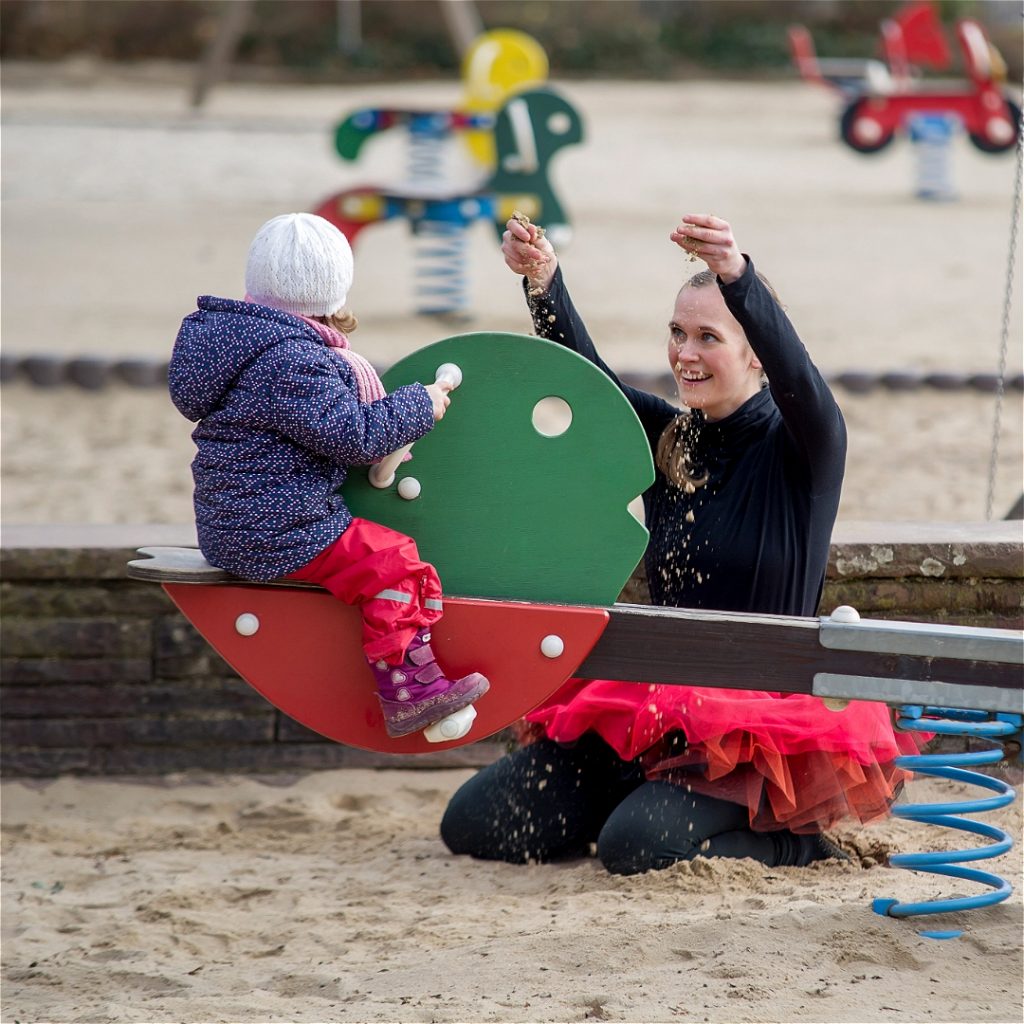
So a lot that will be missed – there are 90 acts or events in total, as festival directors/presenters of the preview Nanna and Olivia tell us. This is a very ambitious programme for an organisation run by four unpaid or low-paid people and a whole host of volunteers.
But I do get to see a lot in my long weekend at the Reykjavík Fringe, a fabulous selection of work that includes some of the highlights of the dance and physical theatre programme, such as the aforementioned Triptych Men, which is as brilliant as anticipated, and wins not only the Outstanding Performance award but also the Artists Choice award. The aforementioned Hold: The Musical, Them (winner of Best Ensemble), and Y Todovia Somos are also much enjoyed. (These four shows are covered here.)
I also see a few of the comedy shows, including the highly entertaining Ari Eldjárn with Saga Class (which wins the Audience Choice award). Ari is always funny without ever resorting to cruelty or misogyny. There’s a great film about the Icelandic drag scene, No Make Up, directed by Polish filmmaker Monika Konarzewska, which brings us a genuinely moving portrait of half-a-dozen of Iceland’s top drag artists, male and female and those who prefer not to be pigeonholed by binary divides, including Faye Knus and Gala Noir, filmed onstage and backstage in the clubs, and out on the streets and beaches. A particularly poignant moment is when Mexican artiste Morning Starr performs live in front of his parents for the first time. And there is a very lovely children’s clown show called Clara and the Free Time about the need to slow down and the power of real-life interactions above screen time, which has great audience interaction and plenty of gentle humour.

On my final morning, I catch a truly inspiring exhibition by The Arctic Creatures, a trio embracing a filmmaker, a visual artist and a theatre director (Óskar Jónsson, Hrafnkell Sigurðsson and Stefán Jónsson) who set up fantastic (and fantastical) photoshoots in the wilds in Iceland, using only natural or found objects in that environment: thus, whatever the ocean washes ashore is transformed into art – colourful plastic, old shoes, bottles, and fishing nets.
My time in Reykjavík passes quickly, but is full of enriching experiences. An eclectic mixture of performance work from around the world seen at the Fringe; many wonderful artists met and engaged with at the various networking events set up, or just post-show at the bar; art exhibitions seen; numerous outdoor swimming trips, to municipal pools and lagoons; excellent soups and breads and smoked fish; coffee with old friends in Reykjavik’s great cafes; and many magical late-night walks home under the midnight sun. There was even a visit to a pagan temple in progress…
As I leave on my early morning flight, I’m thinking of musician-comedian Nick Jameson’s reply when I asked him why he had moved to Reykjavík. I just kept coming back, he said, until it became clear that this was where I needed to stay.
Reykjavík is certainly a city that seems to have that effect on visitors, especially if they are artists. People can’t help but come back. And the vibrant and welcoming Reykjavík Fringe is the ideal occasion for a visit, be it as participant or audience member. Look out for next year’s dates! on the website!
I may well be back…

Featured image (top of page): Eldklárar og eftirsóttar
For a round-up of dance & physical theatre shows seen in the opening weekend of Reykjavík Fringe 2022, see companion piece Girls and Boys Come Out to Play.
2022 marks the 5th annual Reykjavík Fringe Festival. This year’s edition took place 24 June to 4 July 2022.
Artistic director Nanna Gunnars founded the Reykjavík Fringe Festival, along with Jessica LoMonaco and Sindri Þór Sigríðarson, in 2018.
Reykjavik Fringe is the home of the Icelandic grassroots art scene as well as a platform for more established performers to experiment and play. Festival artists are a mix of local and international performers. The festival takes place at the height of summer, making the most of the long days and the midnight sun. Venues are all in central Reykjavík, a close walking distance from one another. Tickets are affordable and the atmosphere is always welcoming.
The Nordic Fringe Network (NFN) is a collaboration of several Fringe festivals in the Nordic countries. The network was launched in 2017 and currently includes Fringe festivals in Finland, Iceland, Lithuania, Norway, Sweden, and Denmark.
NFN offers artists the chance to tour their shows between the Nordic countries, through one joined open call. It also offers Fringe organisers a chance to exchange ideas and learn from one another through regular meet-ups. Nordic Fringe organisers try their best to attend each other’s festivals, and act as jury members during their stay. This also means that artists get a great opportunity to network with foreign festival organisers and industry professionals at each festival. NFN also serves as a support system for other organisations wanting to establish Fringe festivals in their regions.
Rose Bruford European Theatre Arts
The European Theatre Arts (ETA) BA (Hons) course explores different European theatre practices, centred on the notions of the ensemble and of crossing borders; training students in the processes of theatre-making (as performer, director, deviser, designer) alongside an understanding of how performance is shaped by its cultural contexts.
Dorothy Max Prior travelled to Reykjavik with support from Inspired by Iceland, brokered by Reykjavik Fringe Festival. She stayed at Local 101, central Reykjavic.


